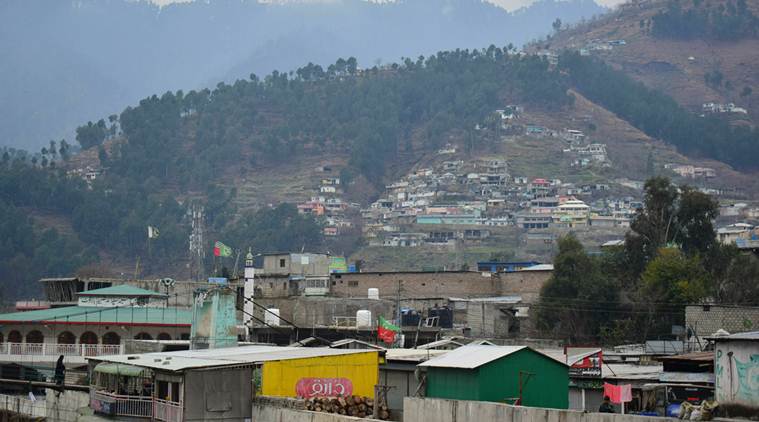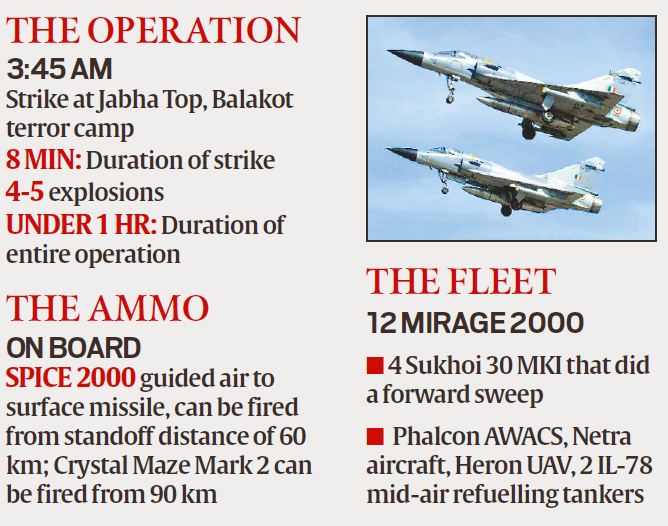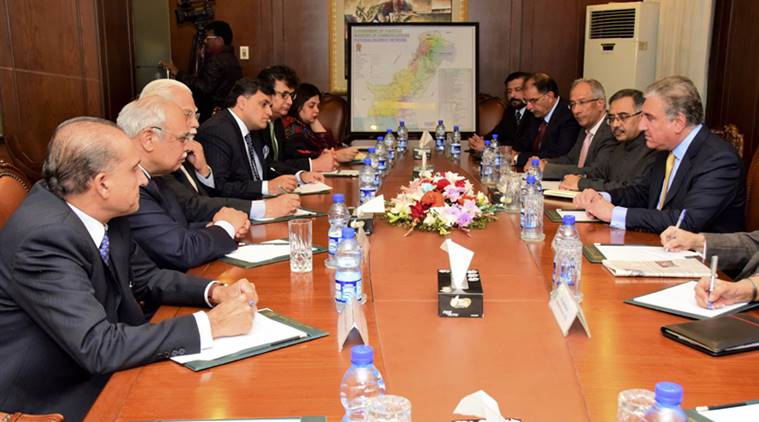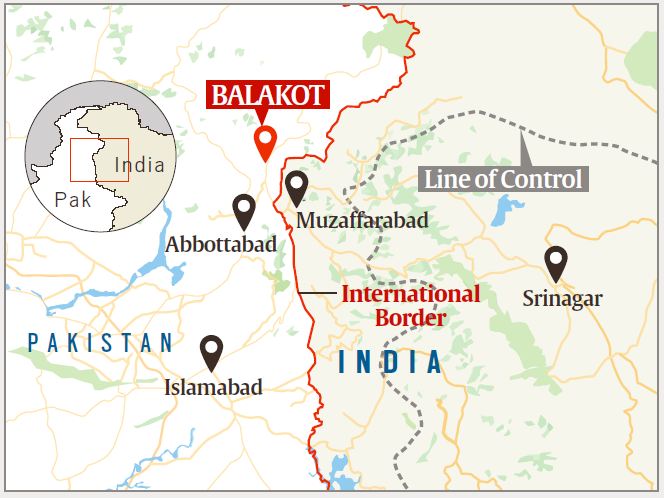The expectation of the Pakistani establishment that the Jaish-e-Mohammed’s headquarters in Bahawalpur would be the obvious target of the Indian retaliation for the Pulwama terrorist attack, led to a large number of Jaish cadre being “congregated” at the organisation’s main training centre in Balakot, top security officials have told The Indian Express.
Balakot is in the Mansehra district of Pakistan’s Khyber Pakhtunkhwa province. It is 63 km north of Abbottabad, (where United States special forces killed Osama bin Laden in May 2011), 200 km from Islamabad, and 40 km north-west of Muzaffarabad, the capital of Pakistan Occupied Kashmir.

The Indian Air Force hit Jabha Top, a forested hilltop where the Jaish-e-Mohammed had its camp.

Indian intelligence agencies have over time compiled an impressive dossier on the activities of the jihadists who have been trained in the Balakot camp. There is a lot of information, including copious lists of Jaish cadres, and plenty of photographic evidence of militants moving around the complex, their exercise halls, ammunition dumps, firing range, and so on.
Express Explained: Why Balakot is a watershed
The training camp is described as being spread over six acres, with enough space to accommodate 600 cadres. The last “passing out” of militant recruits at Balakot, according to intelligence officials, was attended in April 1, 2018 by Mufti Abdul Rauf Asghar, the brother of Jaish founder Maulana Mazood Azhar.
 n this photo released by the PMO, Prime Minister Narendra Modi chairs a meeting of the Cabinet Committee on Security in New Delhi Tuesday, following the Indian Air Force’s strike on a terror camp in Balakot.
n this photo released by the PMO, Prime Minister Narendra Modi chairs a meeting of the Cabinet Committee on Security in New Delhi Tuesday, following the Indian Air Force’s strike on a terror camp in Balakot.
In the complex distribution of portfolios and responsibilities among the members of his family following the creation of the Jaish, Azhar had assigned the task of overseeing the Balakot training centre to his brother-in-law Maulana Yousuf Azhar. This was mentioned by Foreign Secretary Vijay Gokhale in his media briefing on Tuesday.
Also read | Jaish-e-Mohammed: Terror outfit once crushed in Kashmir, now in revival effort
Story continues below this ad
The Indian dossier on the Jaish also contains photographs of Yousuf Azhar, and of the vehicle used by him for doing his daily rounds of the hilly training grounds and firing ranges at Balakot.
 Pakistan Foreign Minister Shah Mahmood Qureshi (right) heads an emergency meeting in Islamabad. (Via AP)
Pakistan Foreign Minister Shah Mahmood Qureshi (right) heads an emergency meeting in Islamabad. (Via AP)
Balakot has symbolic significance for Jaish. It is the burial place of the Barelvi revivalist leader Syed Ahmed Shaheed and his associate Shah Ismail Shaheed, who were killed in Balakot in May 1831 while fighting the subcontinent’s first — albeit unsuccessful — jihad against the army of Maharaja Ranjit Singh. The Jaish training camp in Balakot is named after Syed Ahmed Shaheed.
By all accounts, the activities inside the Syed Ahmed Shaheed Training Camp became more organised, and the numbers of Jaish cadres getting training there swelled after two nephews of Masood Azhar were killed by security forces in the Kashmir valley within the span of a year.
 Balakot, and indeed the entire Mansehra district, has been central to the Pakistani security establishment’s jihadist project. Click image to enlarge.
Balakot, and indeed the entire Mansehra district, has been central to the Pakistani security establishment’s jihadist project. Click image to enlarge.
The first was Talha Rasheed, son of Azhar’s brother-in-law Abdul Rasheed, who was killed in an encounter in Pulwama in November 2017, and the other was Usman Haider, the Maulana’s other nephew who was killed in Tral in October 2018.
Story continues below this ad
READ | Pakistan summons Indian envoy in Islamabad, says jets ‘violated territorial sovereignty’
It is to be recalled that Usman Haider was the son of Ibrahim Azhar, one of the hijackers of IC-814, the hijacking that had led to the release of Masood Azhar himself from prison in India almost two decades ago.
Balakot, and indeed the entire Mansehra district, has been central to the Pakistani security establishment’s jihadist project. The area has a very large number of mosques and madrassas, and this is where the first camps were set up to train jihadists for the Afghan war and later, for Kashmir.
Close to Balakot is Garhi Habibullah, where the Hizbul Mujahideen is reported to have a training camp. Back in 2005, the monthly Pakistani magazine Herald had published a report on the restarting of various jihadist training camps in Mansehra district after having been shut for a couple of years in the aftermath of 9/11.

 Balakot in Pakistan’s Khyber Pakhtunkhwa province. (AP Photo)
Balakot in Pakistan’s Khyber Pakhtunkhwa province. (AP Photo)

 n this photo released by the PMO, Prime Minister Narendra Modi chairs a meeting of the Cabinet Committee on Security in New Delhi Tuesday, following the Indian Air Force’s strike on a terror camp in Balakot.
n this photo released by the PMO, Prime Minister Narendra Modi chairs a meeting of the Cabinet Committee on Security in New Delhi Tuesday, following the Indian Air Force’s strike on a terror camp in Balakot. Pakistan Foreign Minister Shah Mahmood Qureshi (right) heads an emergency meeting in Islamabad. (Via AP)
Pakistan Foreign Minister Shah Mahmood Qureshi (right) heads an emergency meeting in Islamabad. (Via AP) Balakot, and indeed the entire Mansehra district, has been central to the Pakistani security establishment’s jihadist project. Click image to enlarge.
Balakot, and indeed the entire Mansehra district, has been central to the Pakistani security establishment’s jihadist project. Click image to enlarge.




































